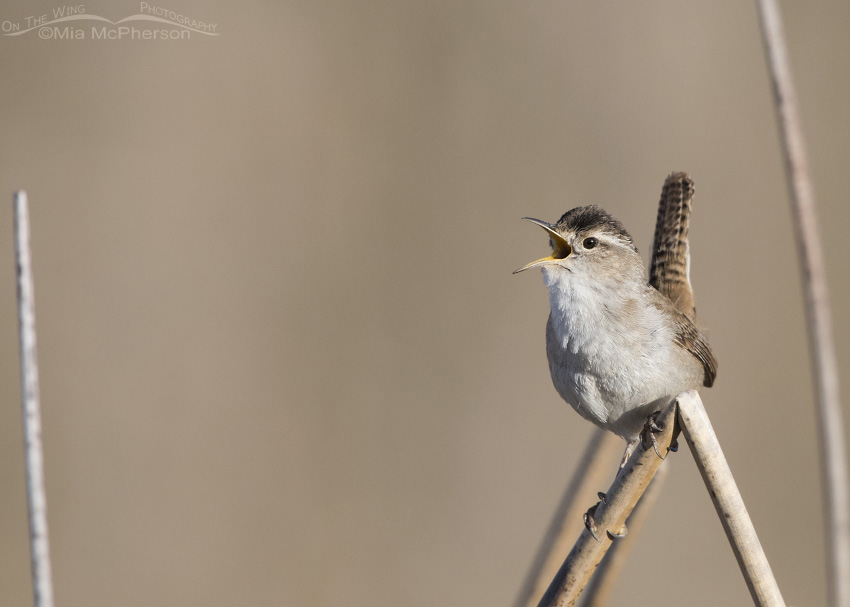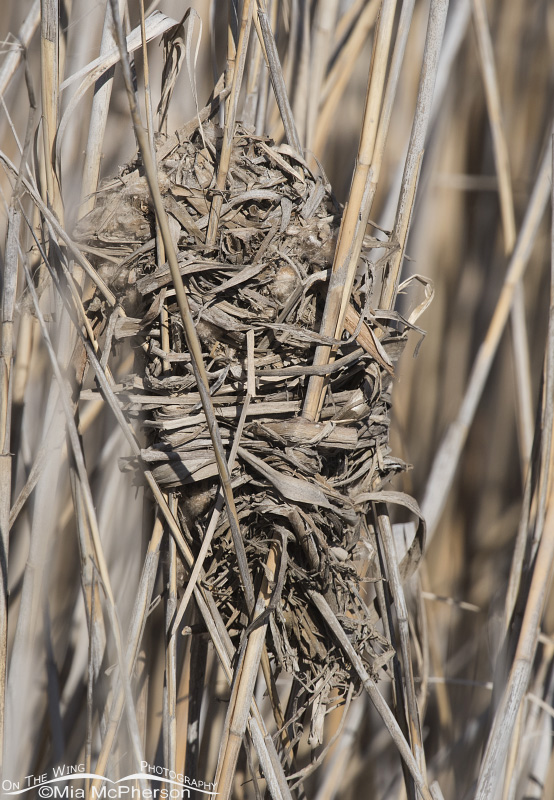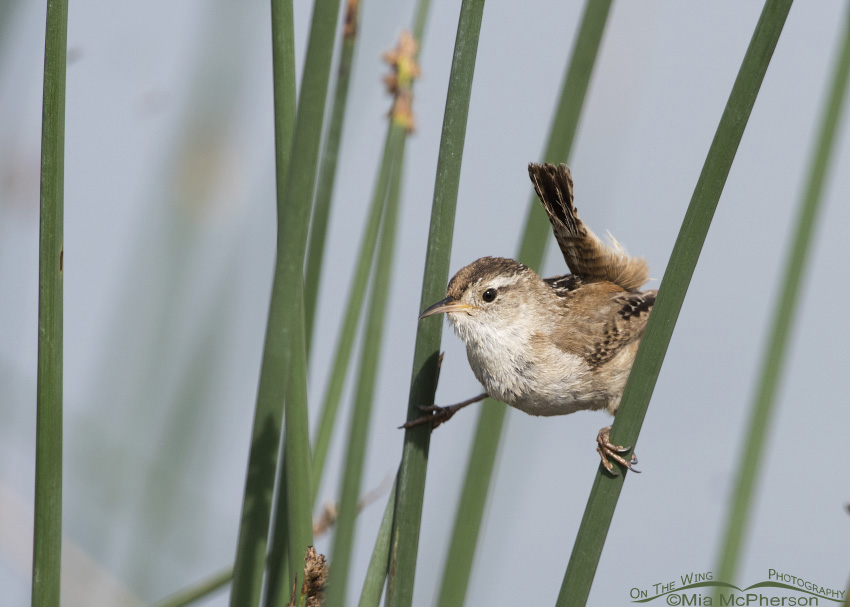 Marsh Wren sings on its territory – Nikon D810, f7.1, 1/1250, ISO 400, Nikkor 500mm VR with 1.4x TC, natural light
Marsh Wren sings on its territory – Nikon D810, f7.1, 1/1250, ISO 400, Nikkor 500mm VR with 1.4x TC, natural light
Even though there is still ice on parts of Bear River Migratory Bird Refuge there are definitely signs that spring is on its way to our part of the country. While I was out on the auto tour loop looking for birds and photographing Tundra Swans last Friday I kept seeing Marsh Wrens flitting around near the side of the road.
The wrens I saw weren’t calling but I know that before long the males will sing on the territories they have selected.
 Marsh Wren nest – Nikon D810, f8, 1/1600, ISO 400, Nikkor 500mm VR with 1.4x TC, natural light
Marsh Wren nest – Nikon D810, f8, 1/1600, ISO 400, Nikkor 500mm VR with 1.4x TC, natural light
On the auto tour loop is it possible even now in winter to see the nests these small wrens create by weaving pieces of vegetation over, around and crisscrossing the sturdy stems of cattails and rushes. It is inside these woven masterpieces that the female will lay eggs, incubate them, and raise her brood. They lay 3 to 10 eggs and incubate them for 12 to 16 days and they can have several broods per season.
 Marsh Wren with rushes – Nikon D810, f7.1, 1/1250, ISO 500, +0.7 EV, Nikkor 500mm VR with 1.4x TC, natural light
Marsh Wren with rushes – Nikon D810, f7.1, 1/1250, ISO 500, +0.7 EV, Nikkor 500mm VR with 1.4x TC, natural light
In some parts of their range they begin nesting as early as the first week of March but here in Utah it begins a little later in March. The males will start singing before too long and the Marsh Wren nesting season in Utah will begin.
Even though I am still photographing the birds of winter it is hard to contain my excitement about spring migration and photographing the birds that nest here in northern Utah especially after seeing my FOY (first of year) Sandhill Cranes last week.
Life is good.
Mia
Click here to view more of my Marsh Wren photos plus facts and information about this species.


Wonderful images and info. I like Patty’s comments and couldn’t have said it better.
Love that nest.
And the bird.
The nest reminds me of an Apache burden basket…very similar. Did it inspire those baskets? I wonder….
Three great shots!!! That is such a loud, perky, feisty little warrior…shot of the nest is very interesting, a real architectural marvel…I always get a kick out of the two-fisted perching positons–like the third image…
Wow, Amazing Nests. Great set of photos Mia.
Very cool.
Oh Mia…these are simply amazing and my, how the birdies pose for you. The nest is a masterpiece. I love nests–my dream is to see a hummingbird nest in the wild. Spring is coming everyday. Thank you again for sharing your talents and knowledge.
OOOOH YES!!! YOU MUST HAVE BEEN THRILLED, AND SMILED
A REALLY BIG SMILE WHEN YOU REALIZED THAT YOU HAD NAILED
THESE IMAGES OF THE BIRD… VERY NICE MIA.. ;-)))
Beautiful images, Mia